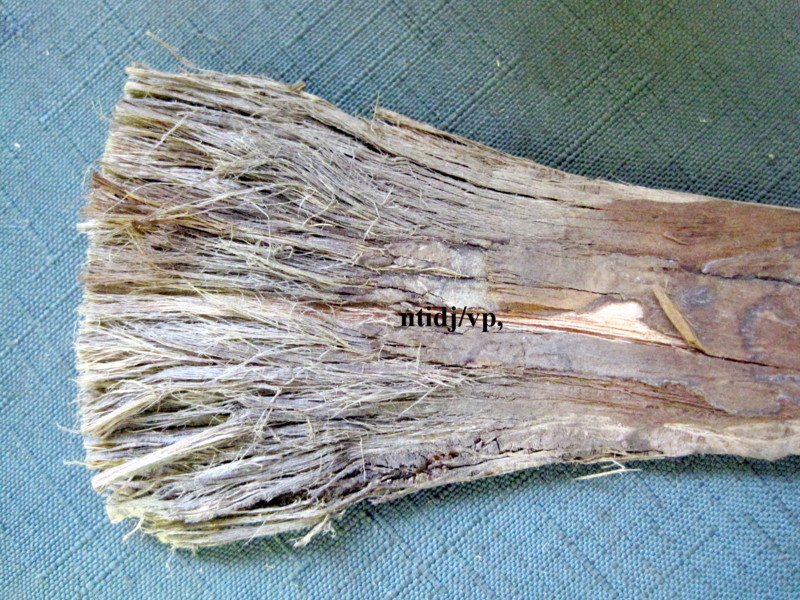A Collection of Unusual Finds
Swedish Wooden Glue Brushes
Swedish Glue Brushes
In a group of tools that descended from a Swedish cabinet maker who had
emigrated to Boston, Mass in the early 1900s, I found several craftsman-made
scraper shaves (some of which were marked with the maker’s dates), along with a
Stanley No. 12 veneer scraper also marked with a date (1907). Along with
several boxes of fancy appliqué carvings, dowels, etc, were a series of curious
wooden brushes, and some others that had not been completed.
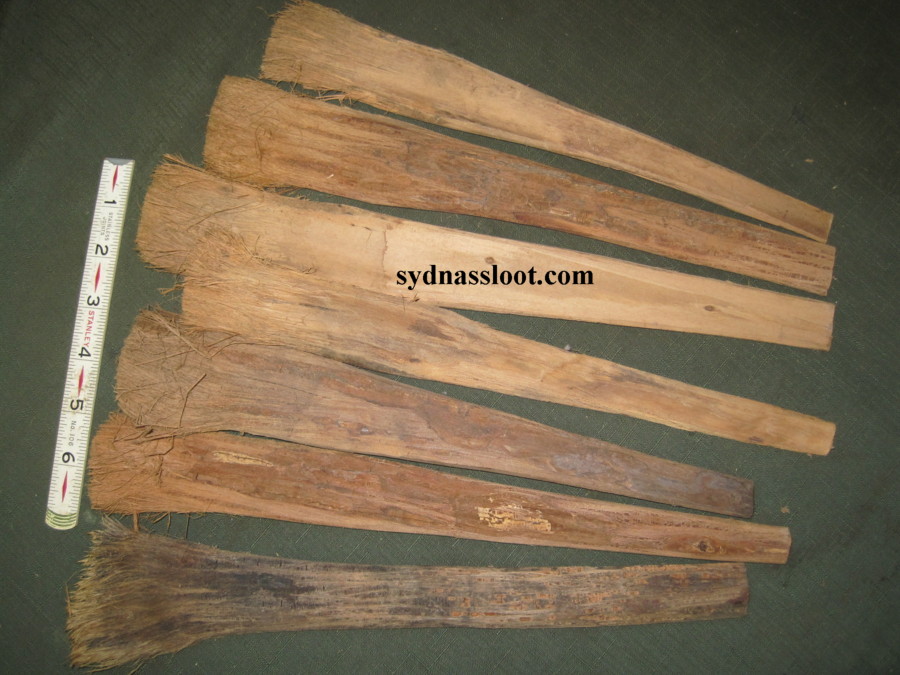
At first I thought that these might have been craftsman-made brushes for
grain painting, or a similar function. But, closer inspection showed that one
of the collection obviously had been used for spreading hide glue in the process
of veneering. All of those scraper planes and shaves suddenly made sense!
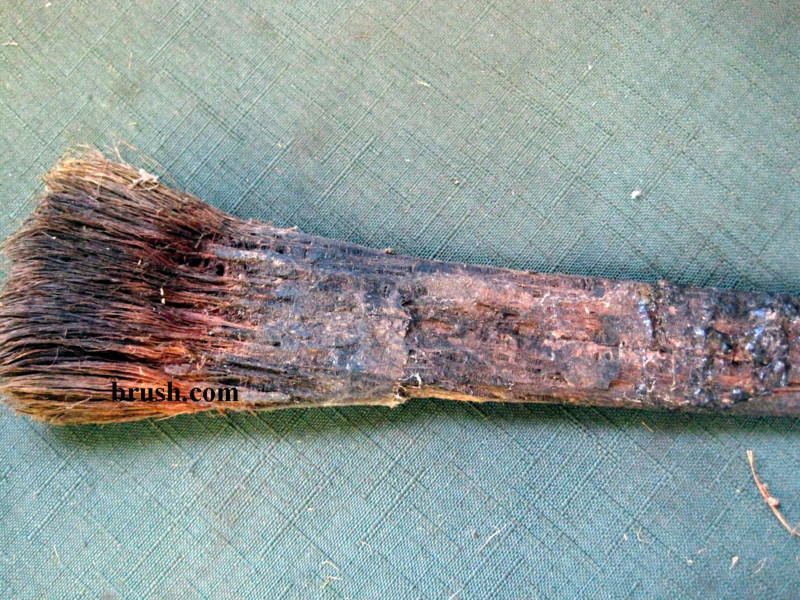
The “brushes” were apparently formed from the inner bark of basswood (Tilia)
that had been split from branches about three inches, or more, diameter. This
material had been trimmed with a draw knife to remove most of the outer bark and
had been roughly trimmed with a draw knife. the trimmed pieces were 8 to
12 inches long, and roughly 1/4 to 3/8 inches thick and a couple of inches wide. In
some sort of fashion, the terminal two or three inches had been “feathered” to
make the brush end.
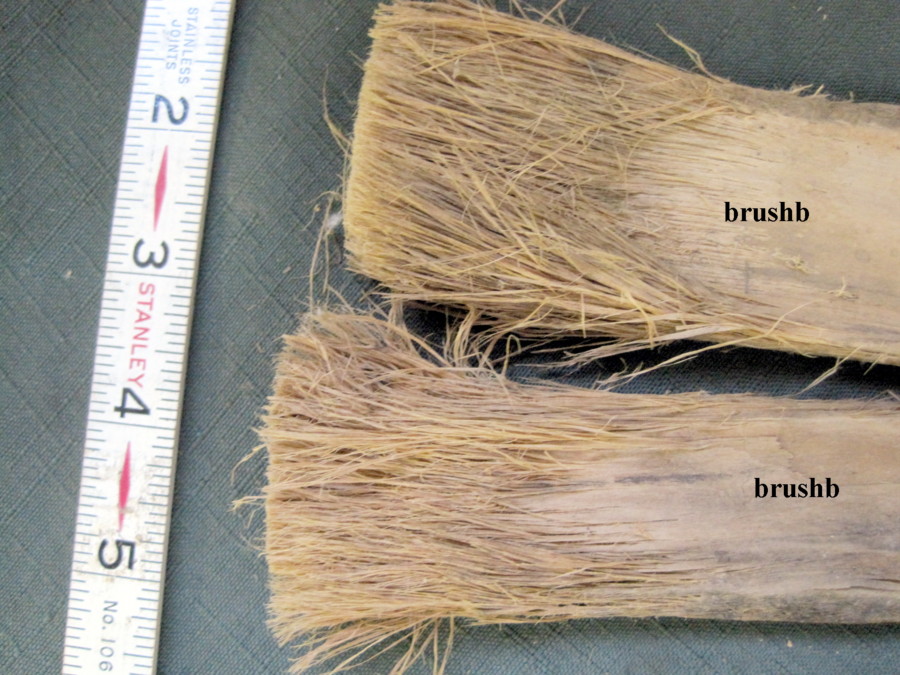
Curious about the process, I took one of the “unfeathered”
pieces, and figuring that it might have first been macerated and then pounded, I
soaked its large end in some warm water for several hours. Adding a little
liquid detergent seemed to speed the softening process.
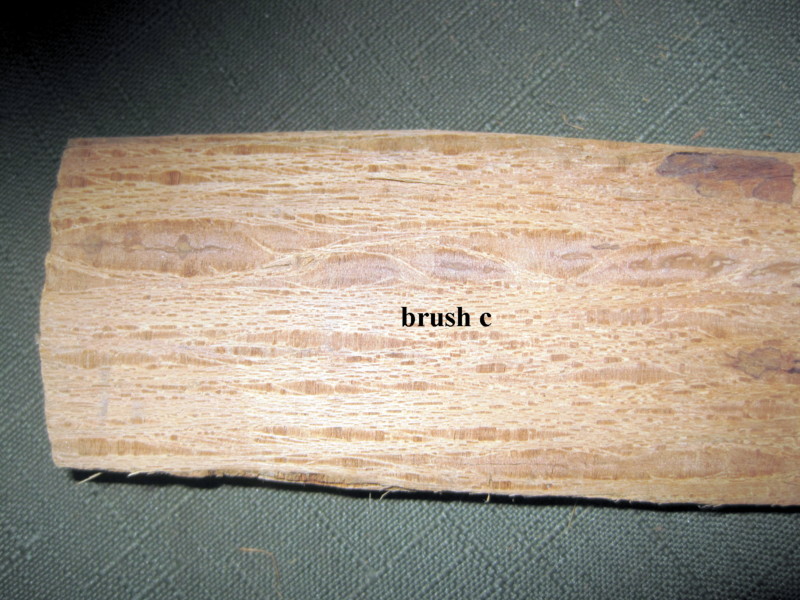
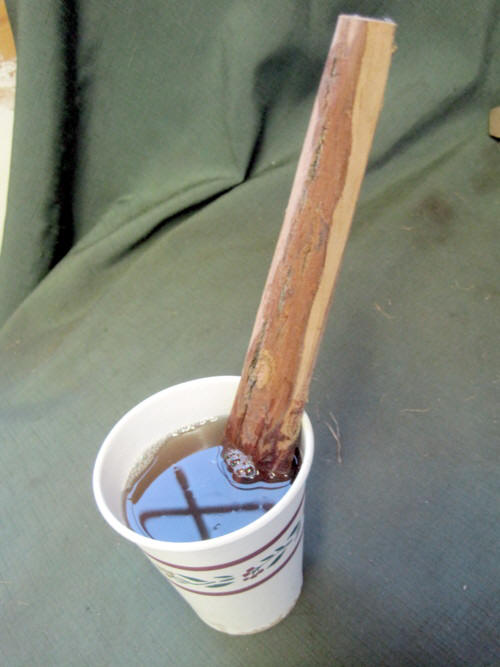
Then I laid the soaked end on my anvil and pounded it with a
lignum mallet. In five minutes – voilá – the xylem tubes in the wood had separated, and with some
further working with my fingers, separated them into a brush that surely would work
nicely as a veneering brush. Clever folks, these Swedes!
